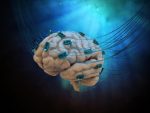Spinal cord stimulation fails to improve walking; study stopped
Treatment tested in 7 Parkinson's patients with freezing of gait

Spinal cord stimulation failed to improve walking ability despite multiple attempts in a small group of people with Parkinson’s disease who experienced freezing of gait — a symptom where the feet suddenly feel stuck and unable to move forward — according to the researchers running the study.
The study was stopped early due to a lack of meaningful benefits, with the scientists finding that the “patients were unresponsive” to such therapy.
“No significant differences were found” with treatment when using a key assessment of Parkinson’s symptoms, the team noted, further adding that “no effect from stimulation was identified in any other outcome.”
The results, detailed in “Spinal Cord Stimulation Failed to Improve Parkinson’s Disease Symptoms in Randomized Crossover Double-Blinded Evaluation,” were published in the journal Movement Disorders.
No gains in walking ability seen with spinal cord stimulation
For years, researchers have explored ways to alleviate motor symptoms — particularly walking difficulties and freezing of gait — in Parkinson’s disease. Spinal cord stimulation has emerged as a promising approach, with early studies suggesting potential benefits. However, how it works in Parkinson’s remains unclear, and, despite encouraging preliminary data, high-quality evidence proving its effectiveness is still lacking.
Spinal cord stimulation uses an electrode implanted in the middle section of the spine to deliver electrical pulses to nerve cells. In people with Parkinson’s, it has been shown to improve posture. In one case, it helped reduce freezing of gait in a man with Parkinson’s in Switzerland. However, earlier studies found no benefit for walking.
In this study, a team led by scientists from the University of São Paulo in Brazil tested whether spinal cord stimulation could reduce the time it took for patients to stand up and walk in a Timed Up and Go test, which measures that ability.
This randomized, controlled, double-blind study demonstrated that [spinal cord stimulation] did not significantly affect gait or motor symptoms in patients … experiencing [hard-to-treat walking] issues, despite extensive stimulation parameter adjustments. … This study was terminated for futility.
The research involved 12 patients with difficulty walking and freezing of gait, with the first eight receiving implants. The participants had a median age of 69, and had been experiencing difficulty with walking for a median of four years. During screening, none of the patients reported pain.
Because “there is no consensus on how to stimulate,” the first six months of the study were spent adjusting the stimulation settings to find the optimal level for each of the patients. During this initial period, one patient left the study due to kidney stones.
After up to six weeks without stimulation, the remaining seven patients were randomly assigned to receive either subthreshold stimulation — meaning below the optimal level — or no stimulation for three weeks. Neither the patients nor the researchers knew which was which during testing. After that, all patients received three weeks of stimulation above the optimal level.
Over the next 6-8 months, participants received spinal cord stimulation with the optimal combination of settings for each of them. During this period, the researchers also watched for changes in the MDS Unified Parkinson’s Disease Rating Scale (MDS UPDRS) Part III scores, a measure of motor symptom severity.
Spinal cord stimulation made no significant difference compared with no stimulation in how fast patients completed the Timed Up and Go test (11.59 vs. 12.38 seconds) while on medication — that is, within one hour of taking levodopa, an approved treatment for Parkinson’s. The same times were observed when patients were off medication (24.49 vs. 16.93 seconds).
Timed Up and Go test results, along with MDS UPDRS Part III scores, including specific measures of motor symptoms such as tremor and rigidity, showed little to no difference between active spinal cord stimulation and sham treatment. Functional MRI findings, which reflect nerve cell activity, also revealed no notable changes, which the researchers noted were “in alignment with clinical outcomes.”
“This randomized, controlled, double-blind study demonstrated that [spinal cord stimulation] did not significantly affect gait or motor symptoms in patients … experiencing [hard-to-treat walking] issues, despite extensive stimulation parameter adjustments,” the researchers wrote. “This study was terminated for futility.”
Overall, the team concluded that “no effect of spinal cord stimulation in Parkinson’s disease symptoms was identified.”







